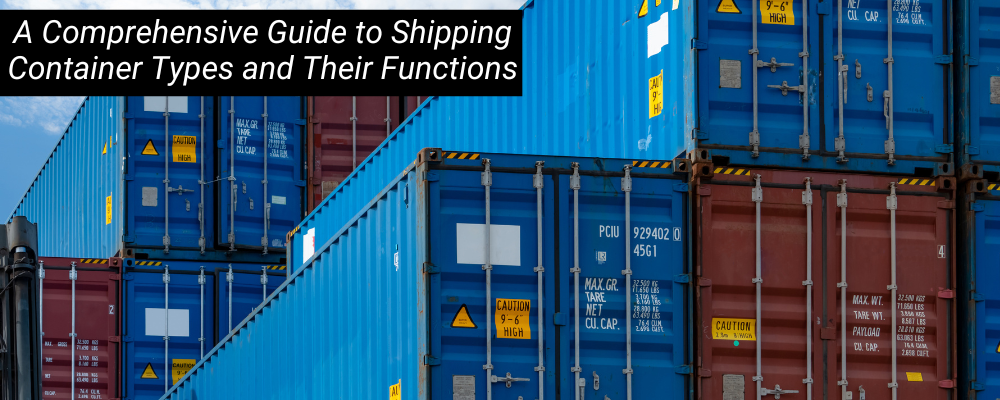
Shipping containers play a vital role in transporting goods across the globe. These standardized large metal boxes have revolutionized the industry by reducing costs and increasing efficiency. In this comprehensive guide, we will explore different types of shipping containers commonly used in logistics, their functions, specifications, and key considerations when selecting the right container for your shipment.
The Significance of Shipping Containers:
Before the invention of shipping containers, goods had to be painstakingly packed into sacks, barrels, and wooden crates then loaded one by one onto cargo vessels. This laborious process would take up to three weeks to unload and load each ship. However, thanks to the miraculous invention of shipping containers by Malcolm McLean in 1956, today’s mammoth container ships can be emptied and filled within just 24 hours.
1. Dry Containers:
The most commonly seen type of container on cargo ships is dry containers. They come in various sizes such as 20GP (General Purpose), 40GP (General Purpose), and 40HC (High Cube). Dry containers are designed to transport general cargo that doesn’t require special temperature or ventilation control. They feature sturdy walls and floors to protect goods during transit.
– Interior dimensions: The smallest dry container is a 20GP with an interior length of 5.89 meters, width of 2.35 meters,
and height of 2.39 meters.
– Payload capacity: Up to 28.3 metric tons.
– Volume capacity: Approximately 33 cubic meters.
2.Refrigerated Containers (Reefers):
For perishable food items or pharmaceuticals that require specific temperature control throughout transportation, reefers are used. They come in two sizes -20 footer & 40-footer refrigerated containers equipped with cooling systems that regulate temperature & humidity levels inside. The standard reefer containers maintain a temperature between +25 degrees Celsius and -25 degrees Celsius for chilled and frozen cargo. Some refrigerated containers can even go as low as -35 degrees Celsius.

– Interior dimensions, payload, & volume capacity: Generally smaller than dry containers due to insulation walls & refrigeration unit.
3.Open Top Containers:
Open top containers have no solid roof making them ideal for cargo that cannot be loaded through regular doors, such as oversized machinery or heavy equipment. They come in 20-foot and 40 foot sizes with removable or convertible tops that allow easy loading and unloading from the top using an overhead or mobile crane.
4.Flat Rack Containers:
Flat rack containers have a simple structure with an open top and collapsible end walls, suitable for carrying heavy machinery, vehicles, construction equipment, large pipes, and other oversized items. They come in 20-foot and 40-foot sizes, and their absence of side walls allows flexibility in accommodating cargo of various shapes and sizes.
Key Features and Functions of Each Container Type:
– Dry Containers: Provide secure weatherproof environment for general goods.
– Reefer Containers: Maintain specific temperature conditions for perishable items.
– Open Top Containers: Facilitate transportation of oversized or tall cargo.
– Flat Rack Containers: Offer versatility for transporting irregularly shaped or oversized cargo.

Tips on Selecting the Right Container:
When choosing a shipping container for your shipment, some important considerations include:
a) Cargo Size and Weight: Ensure that your goods fit comfortably within the interior dimensions of the chosen container while considering weight restrictions to avoid exceeding maximum load capacity.
b) Cargo Type and Special Requirements: Different types of goods may require specific container features. For perishable items, opt for refrigerated containers. For oversized or tall items, opt for open-top or flat-rack containers. Understanding your cargo’s needs is highly crucial for selecting the appropriate container.
c) Handling and Loading Equipment: Remember the equipment required to load and unload your cargo.

